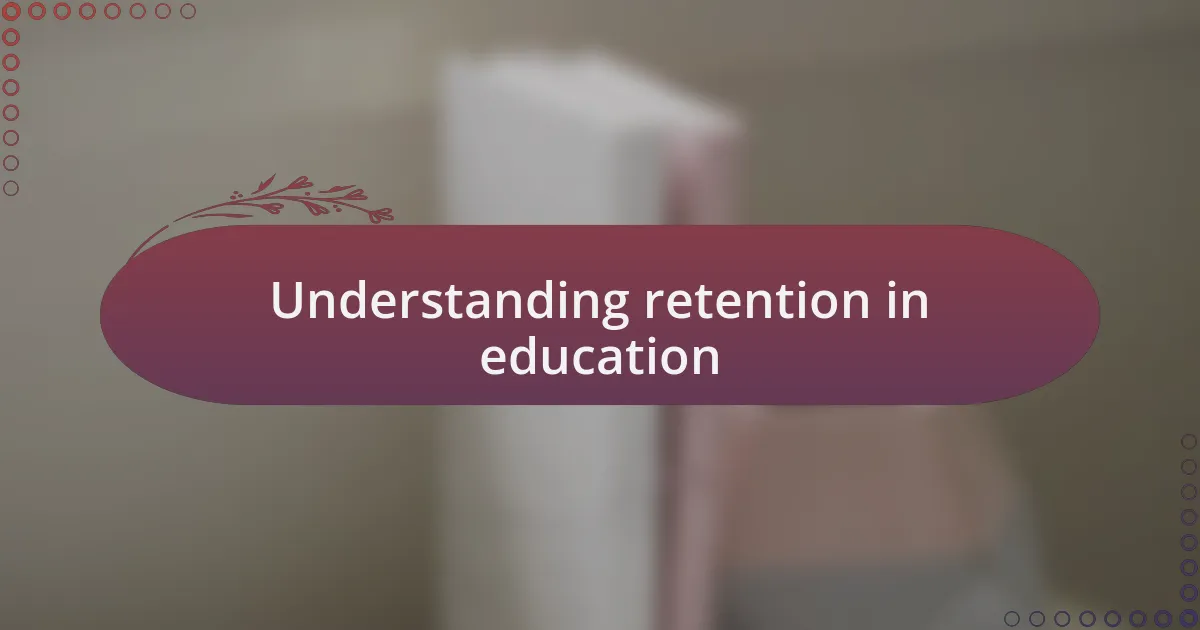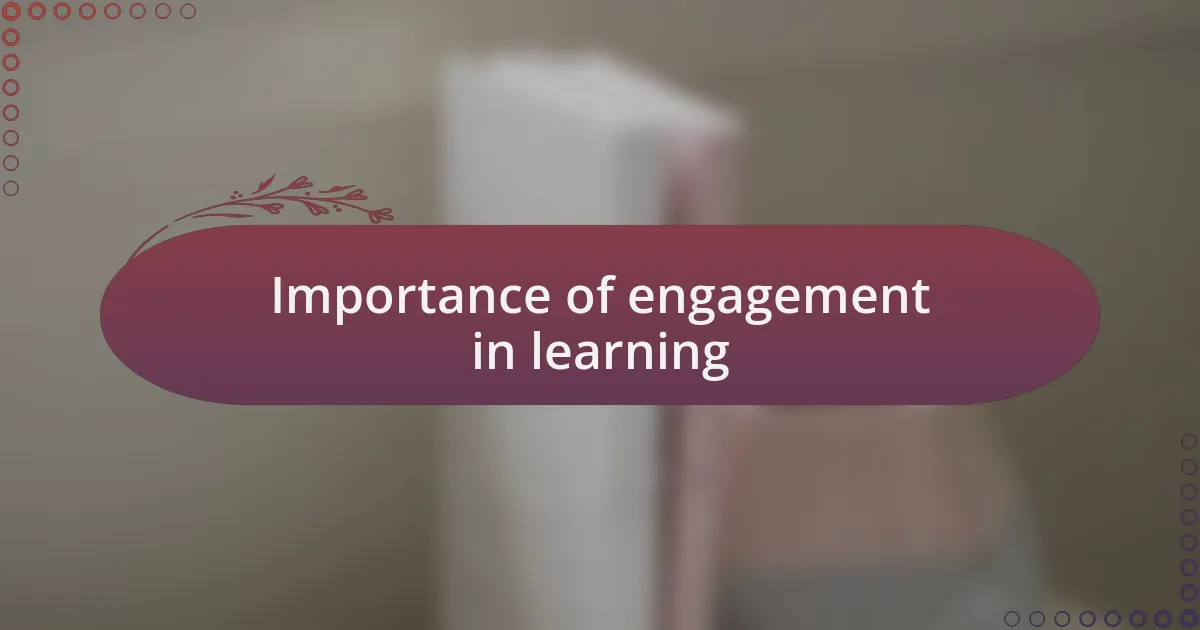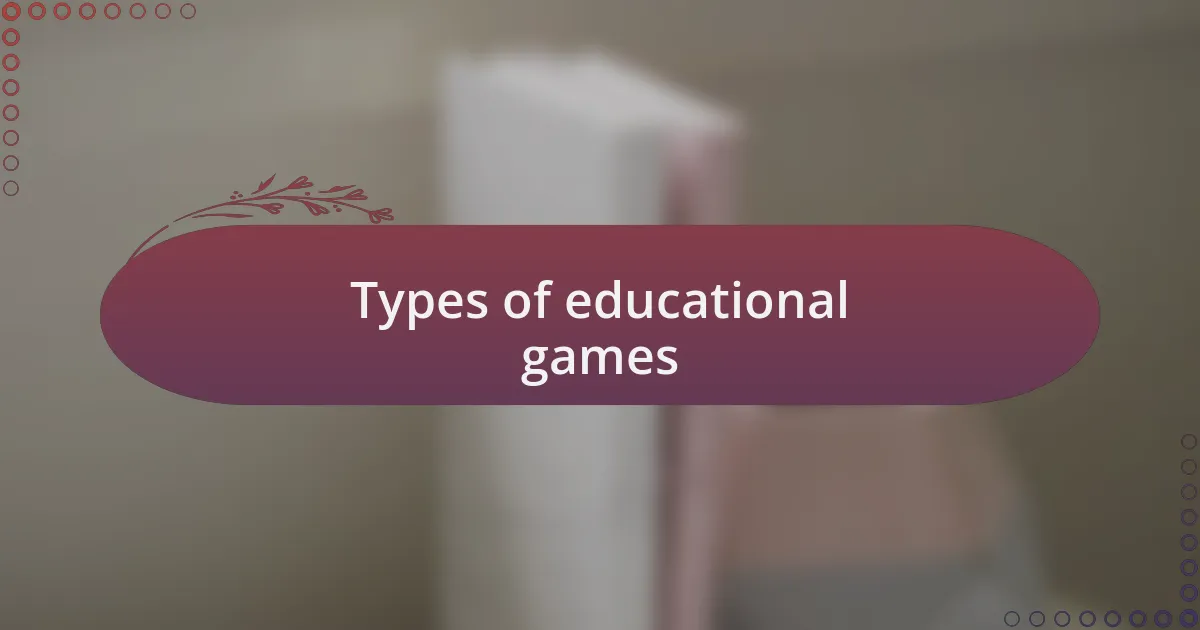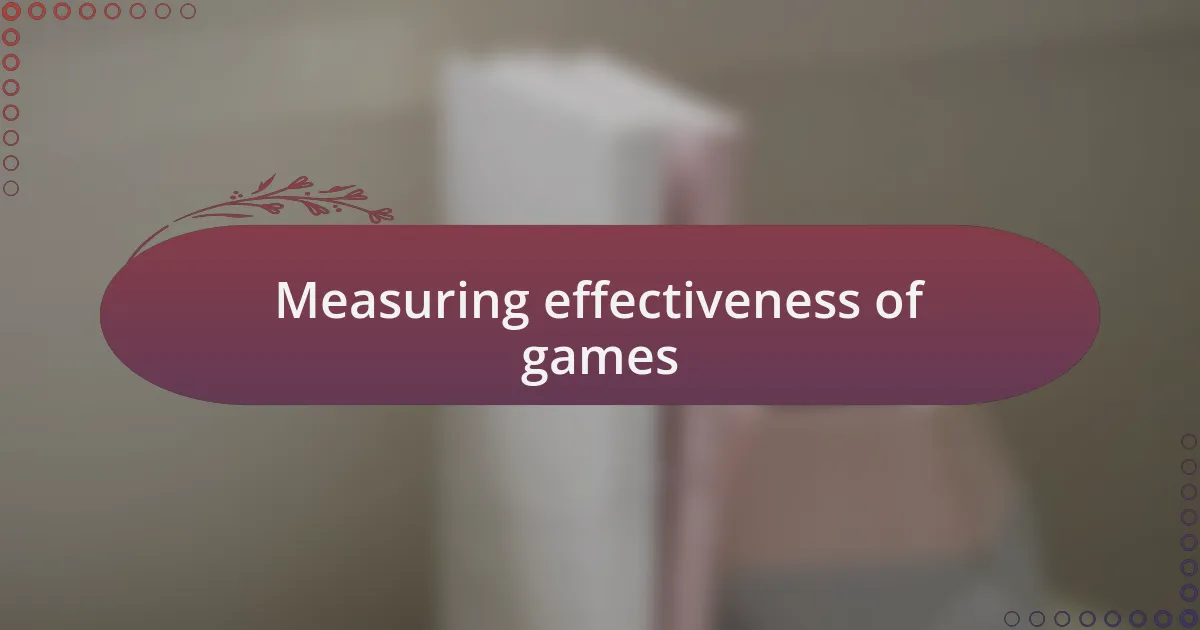Key takeaways:
- Retention in education is enhanced by emotional engagement and diverse learning styles, leading to better recall of information.
- Interactive and gamified learning experiences boost student motivation, curiosity, and deeper understanding of material.
- Effective implementation of educational games involves aligning them with learning objectives and gradually introducing game elements.
- Measuring the effectiveness of games requires a mix of qualitative feedback and quantitative data to assess knowledge retention and engagement levels.

Understanding retention in education
Retention in education is a fascinating yet complex subject. Essentially, it refers to how much information learners can recall and apply over time. Have you ever noticed how some lessons really stick with you while others fade away? That’s the magic (or sometimes the mystery) of retention.
From my experience, I think retention is greatly influenced by engagement levels. When I find a topic exciting, I naturally remember it better. It’s as if my brain locks in on the details because I’m invested. This connection is why emotionally charged learning experiences can often lead to deeper understanding and memory.
Moreover, it’s important to consider that different students have diverse learning styles. I’ve seen how a hands-on approach works wonders for some while others flourish with visual aids. Have you ever been part of a group activity that brought a lesson to life? Those interactive moments often create lasting impressions, reinforcing the idea that how we learn can significantly impact what we retain.

Importance of engagement in learning
Engagement in learning isn’t just a bonus; it’s a necessity for deep understanding. I remember the thrill of participating in a debate in high school – I was fully absorbed in the topic, and it felt like the information seeped into my mind effortlessly. When we are actively involved, our brains respond more vigorously, making us more likely to recall what we’ve learned later on.
Think about a time when you were completely captivated by a lesson. Maybe it was a science experiment or a gripping story in literature. I find that when I’m emotionally connected to the material, it transforms my learning experience. This emotional engagement creates a bond with the content, helping to engrave those lessons into our memories.
Moreover, engaging learners through interactive methods can ignite curiosity and motivation. I often witnessed students perk up during gamified sessions, where learning felt more like play than work. By incorporating games and activities, we can create an environment that not only holds attention but also fosters a genuine desire to learn and retain knowledge. Doesn’t that sound like an ideal classroom setting?

Types of educational games
One popular type of educational game is the quiz-based format, which I have found incredibly effective in my experience. These games not only test knowledge but also stimulate friendly competition among learners. I remember organizing quiz competitions in my classroom, and the excitement was palpable; students rallied together, adopted creative team names, and genuinely enjoyed proving their knowledge, making retention come naturally.
Another engaging option are simulation games, which I’ve seen transform complex subjects into interactive adventures. I once facilitated a simulation related to environmental science, where students acted as policy makers making decisions on sustainability. Watching them immerse themselves in real-world scenarios ignited a spark of interest that went beyond the classroom. It was fascinating to see how vibrant discussions emerged, showcasing their understanding and critical thinking skills.
Finally, narrative-based games, where learners embark on story-driven quests, create an avenue to explore content on a deeper level. These adventures hook participants through compelling narratives, leading them to discover concepts while being fully engaged. I recall a time when we used a historical narrative game; students became characters in history, and it wasn’t just about dates and events anymore. They felt the weight of their choices, forging connections to the material that most traditional methods simply couldn’t achieve. Isn’t it amazing how a compelling story can lead to greater understanding?

Strategies to implement games
To successfully implement games in your educational strategy, start by aligning them with your learning objectives. During a project I led, I intentionally selected games that reinforced specific concepts we were covering in science class. By doing this, not only did I enhance the lesson’s effectiveness, but I also noticed my students were more motivated to engage with the material. Have you ever experienced that moment when learners connect the dots while playing a game? It’s quite rewarding.
Another strategy involves incorporating game elements gradually to avoid overwhelming your students. For instance, when I introduced point systems and badges in my classroom, I noticed an unexpected boost in enthusiasm. The playful competition created an atmosphere where students encouraged one another to excel, rather than feel intimidated. It’s like turning a lesson into a friendly challenge—don’t you see how this can shift the entire learning dynamic?
Finally, be sure to solicit feedback from your students about the games they enjoyed and the skills they think they gained. I recall a time when I asked for their input after a game-based lesson, and the insights they provided were enlightening. Not only did it help me refine my approach, but it also made them feel valued and invested in their learning. How often do we underestimate the voice of our learners? Engaging them in the process can lead to a more tailored and meaningful educational experience.

Measuring effectiveness of games
Measuring the effectiveness of games in education goes beyond just observing student engagement; it often requires a combination of qualitative and quantitative data. During my experience with game-based learning, I implemented pre- and post-assessments to gauge knowledge retention. For example, after using a trivia game, I found that students’ scores improved significantly, highlighting how interactive elements can solidify understanding. Have you ever tried comparing performance before and after a game? It can be quite revealing.
Another approach I found valuable is to track participation levels and time spent on tasks during gameplay. One time, after launching a math-related game, I noticed that students not only played longer but also collaborated more effectively than they did during traditional lessons. This collaboration fostered a sense of community and support among students. It prompts me to wonder, how often do we see such dynamics in conventional learning environments?
Lastly, gathering anecdotal feedback from students can provide rich insights into the game’s impact. After a particularly engaging history simulation, I asked my students to share their takeaways. Their reflections revealed a deeper understanding of the subject matter and an appreciation for the learning process itself. Isn’t it fascinating how students can articulate their learning experiences when given the opportunity? This combination of hard data and personal stories helps create a comprehensive picture of how games enhance retention and engagement in learning.

Personal experiences with educational games
Engaging with educational games has been a transformative experience for me, particularly during a summer camp I facilitated. I introduced a scavenger hunt game centered around environmental science. Seeing the children’s faces light up as they raced to solve clues was a delight. It made me realize how much more invested they became in the subject when they could interact with it rather than simply read about it. Have you ever witnessed such enthusiasm in a learning environment?
One memorable instance involved using a spelling game that involved players competing against the clock. Students were so immersed that I could hardly get their attention to start the next lesson. Their laughter and cheers echoed through the classroom. This experience demonstrated that competition, when infused with fun, can significantly enhance students’ motivation and retention of information. Does this not showcase the power of games in transforming mundane topics into exhilarating challenges?
In my personal journey, I’ve discovered that reflection plays a crucial role in reinforcing what has been learned. After a math game, I encouraged students to share their strategies and what they learned about problem-solving. The discussions that ensued were inspiring! They learned from each other, articulating their thought processes in ways I never anticipated. It’s moments like these that make me believe in the true educational value of games—creating a space where collaboration and understanding flourish. How might we harness these experiences to shape future learning adventures?